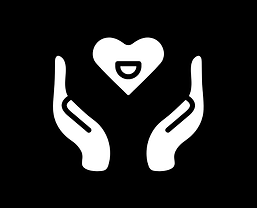The Compassion Method
Transformation begins when compassion reaches the deepest wounds
.png)
Why This Teaching Matters
Out of all the tools in the KTL, this might be the most misunderstood — and the most powerful.
Because when most men think of healing, they think of fixing. But compassion isn’t about fixing — it’s about feeling with.
Most of us were never shown that kind of love. We learned to solve, suppress, or spiritualize pain, but not to stay in it.
The Compassion Method changes that. It teaches you how to remain present in the storm — with yourself, with others, and with God — without running away or numbing out.
When you can stay in pain without judging it or rushing it, your nervous system experiences what it’s been longing for your whole life: safety in the middle of pain.
That’s where transformation begins — not when you fight the storm, but when you learn to stand in it.
Love That Doesn’t Rush to Fix
Compassion is the moment you stop trying to rescue yourself and start learning to be with yourself.
It’s not about saying the right thing — it’s about staying in the room when it’s uncomfortable.
Most people try to escape pain through distraction, control, or denial. But compassion does the opposite: it creates space.
It doesn’t force emotion to leave — it gives it permission to move.
And that’s where healing starts.

The Science of Compassion
From a nervous system perspective, compassion brings you back into ventral vagal regulation — the state of calm and connection.
When someone stays present with you instead of trying to fix you, your body reads that presence as safety.
That’s why compassion heals what advice never can.
Your nervous system learns, “I can feel this and still be safe.”
That single truth rewires your response to pain and breaks the old cycles of shame, fear, and avoidance.
.png)
Compassion and the Inner Child
Compassion is what re-parents your nervous system.
It’s the voice that says, “You’re safe now. I’m not leaving.”
It’s the healing posture that your younger self always needed — someone who could stay when everyone else shut down or walked away.
Instead of judging your triggers, you meet them with curiosity.
Instead of shaming the parts of you that still hurt, you bring comfort and understanding.
That’s how the wounded child becomes the wonder child again — not through pressure, but through presence.


Compassion and God’s Heart
Every encounter with compassion is an encounter with God.
Jesus never avoided people’s pain — He entered it.
He touched the leper, wept with the grieving, and saw the person beneath the sin.
When you practice compassion, you mirror His heart.
You meet pain not with condemnation, but with connection.
You become a vessel of the same grace that’s transforming you.
“The Lord is gracious and compassionate, slow to anger and rich in love.” — Psalm 145:8
How It Fits Into the KTL
If Polyvagal Theory teaches the science of safety, then The Compassion Method teaches the practice of safety.
It’s the bridge between awareness and healing — between understanding why you hurt and learning how to stay with that hurt until it transforms.
It’s the sap that flows through the entire tree.
Without compassion, every other concept — nervous system awareness, inner child work, identity, even faith — stays intellectual.
Compassion turns knowledge into transformation.
This is also where strength gets redefined.
Compassion doesn’t make you soft — it makes you stable.
It’s the courage to face pain without numbing, the power to bring calm into chaos, the capacity to love like God does: without condition.
When a man learns compassion, he stops trying to control his emotions and starts leading them.
He becomes safe — for himself, his marriage, and his mission.

Practice

Try this the next time you feel triggered, anxious, or ashamed:
-
Pause. Don’t fix — just stay.
-
Notice. Where do you feel it in your body?
-
Name it. “This is sadness.” “This is fear.” “This is shame.”
-
Respond with compassion. “Of course you feel this way. You’re not wrong for feeling it.”
-
Invite God in. “Jesus, sit with me here. Help me see what You see.”
That’s compassion in action — the meeting point between nervous system regulation and divine presence.
Closing Thoughts
Compassion doesn’t erase pain — it transforms it.
Because love that stays in the storm is the love that heals.